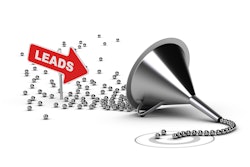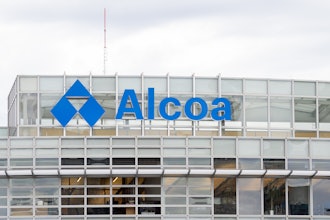The past 16 months have been a time of planning and executing as the rules of the Food Safety Modernization Act (FSMA) were finalized and the compliance deadlines reached. For many companies, implementing an Enterprise Resource Planning (ERP) system has laid the groundwork for compliance.
At the start of this new year, it is time to look at ways to continuously improve on that foundation. Meaningful changes are made by analyzing meaningful data. These insights create a course of action to further increase an organization’s efficiency, decrease costs, improve profitability and improve customer service levels. “Best in class” organizations have achieved an average 26 percent year-over-year reduction in operating costs by taking full advantage of their ERP system.
This article will highlight key areas that can benefit from “fine tuning and continuous improvement.”
Efficiency Benefits
One of the top focuses for “best in class” companies is how to streamline and accelerate business processes, and improved efficiencies are a natural result of ERP. Industry research finds an average 35 percent improvement in inventory turnover; those companies that go the extra mile report 57 percent improvement. Improved measurement and timely reporting of efficiency, utilization and yield can result in sustainable Overall Equipment Effectiveness (OEE). Better planning and equipment usage leads to better overall equipment utilization, and minimal downtime for changeovers. Improved scheduling and sequencing can reduce unproductive changeovers and lost production time. Internal schedule compliance typically improves 18 percent. Smoother work schedules with fewer outages and interruptions leads to a 17 percent improvement in complete and on-time shipments, as well as reduced overtime pay for similar amount of production.
Cost Benefits
Reducing costs is another top focus for any business. Just as efficiencies naturally improve, costs can be positively impacted by an ERP. Product costs can be reduced by improved efficiencies, increased utilization and improved yield in addition to reduced inventory costs from better inventory management. “Just in time” delivery of ingredients can help achieve increased profits by minimizing inventory holding costs and reducing delays caused by outages of raw materials or packaging. Numerous industry studies have reported that an integrated ERP system can lead to a 20 percent reduction in inventory costs. Improved inventory management then leads to lower warehouse costs, handling, transportation and more, which adds another 5-10 percent to savings.
Additional benefits are the ability to address challenging cost points, unprofitable customer orders and numerous other inefficiencies. Cost optimization allows the company to measure actual cost variances against standard costs and allocate costs based on number of hours, quantity produced or other factors. Better material planning allows purchasing departments to negotiate better terms with vendors, a potential 5 percent reduction in overall purchasing costs. In addition, better throughput, lower production costs, and better quality can lower direct and indirect costs by about 10 percent.
Strategic Benefits
Strategic benefits begin with a single source of truth. Information spread across a wide range of sources is difficult to organize in order to identify trends, and potential errors and cost-saving opportunities go unnoticed. Data accuracy also increases as there is no longer the need for duplicate entries. Increased visibility across departments leads to a better understanding of how each facet of the organization operates and interacts. A fully integrated ERP system replaces those standalone applications and homegrown measures, and existing resources are redeployed from time-consuming, manual administrative tasks to strategic activities. Manufacturing is coordinated with asset management, logistics and supply chain management, and customer service, which makes it easier for customers to do business with your organization and creates a more rewarding customer experience.
Conclusion
Manufacturers must juggle demanding production schedules, strict compliance regulations, increasing consumer demands, and stronger competition while managing and reducing costs, as well as increasing sales. Visibility is essential to optimizing the entire enterprise. Complete utilization of the many features of an integrated ERP designed specifically for process manufacturing is an ongoing process that should continue long after the system has been implemented. “Going Live” after the implementation of an ERP system should not be thought of as “the end of the project” but rather the “beginning of the journey for continuous improvement for ongoing efficiency improvements and cost reductions.”
Jack Payne is VP, Product Management & Solutions Consulting for Aptean




















